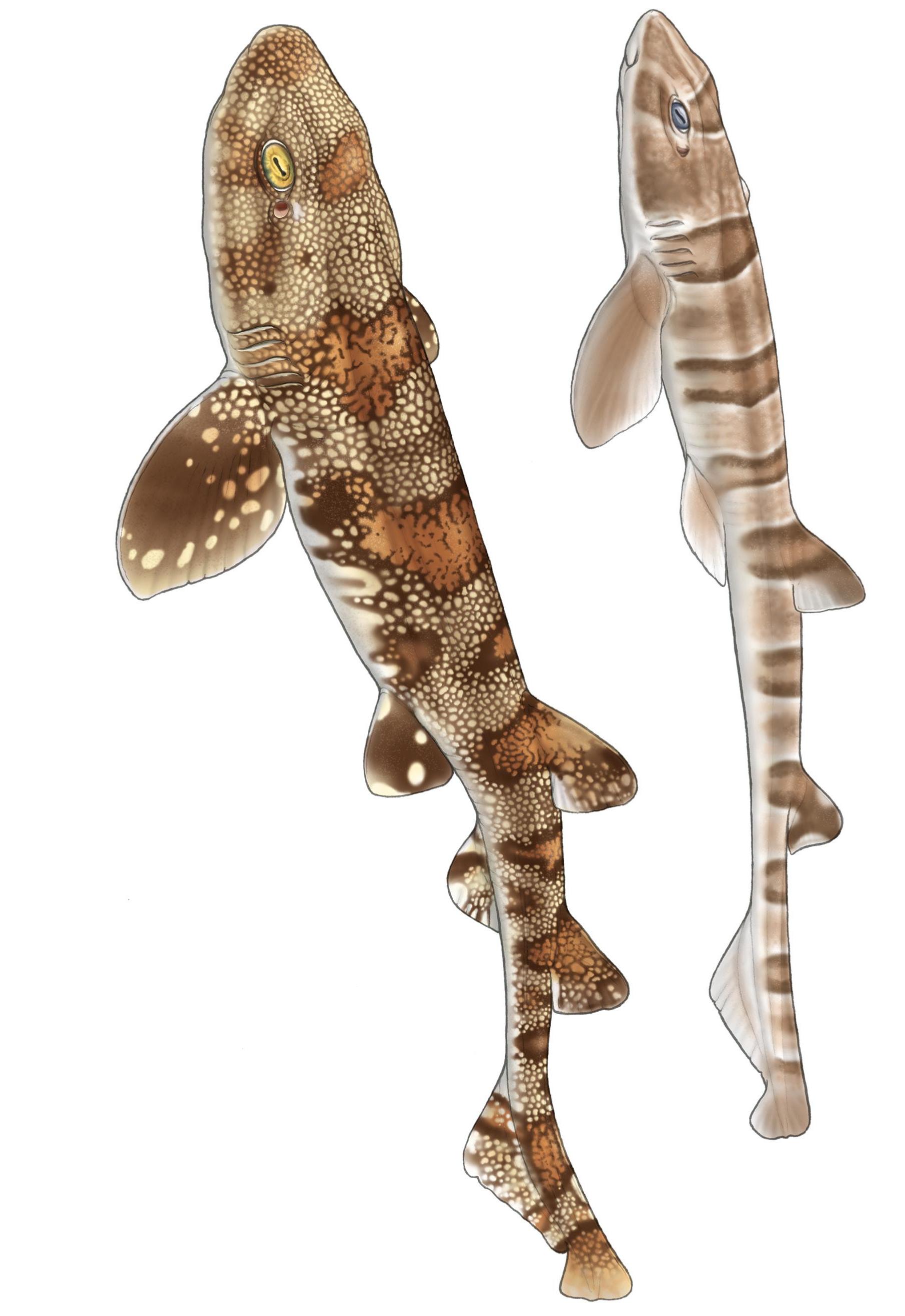
5 minute read
Q&A with Marc Dando Blending science and art through illustration
Blending science and art through illustration Hear about Marc Dando’s career as a wildlife illustrator and how he’s been drawn into the world of sharks and rays.
Written by Chelsea Stein
Advertisement
”Sharks were like a magnet that I didn’t see. They kept drawing me closer to where I’ve ended up… if you look back, it all fell into place at the right time.”
Marc Dando has created hundreds of science-based shark graphics and illustrations over his career, illuminating research and showcasing species specifics for various books and infographics. He has co-authored reference and guidebooks like Sharks of the World (2005), Sharks of the World: A Complte Guide (2021) and multiple editions of A Pocket Guide to Sharks of the World – all of which identify, illustrate and describe every known shark species.
But Marc’s work hasn’t always been focused on sharks. He’s been creating art and illustrating since the age of 16, and his career has evolved over time as he has found a way to blend science and art through illustration.
Many of Marc’s friends were also working in graphics and design, and eventually, he started up his own business. He says it was through chance meetings and conversations that he was drawn to the world of sharks, rays, and chimaeras.
Alongside the graphics work, Marc worked on detailed illustrations for commercial printers in his free time, one of which introduced him to natural history publisher Christopher Helm. From this meeting, Marc went on to work on his first book called Sealife: A Complete Guide for Marine Environment (1996). The book covered more than 600 species inhabiting the world’s oceans – everything from seabirds to otters to polar bears.
From there, Marc and a colleague were planning to produce a book specifically on the world of dolphins. “As it turned out, we tried pitching the world of dolphins book to a publisher, and they
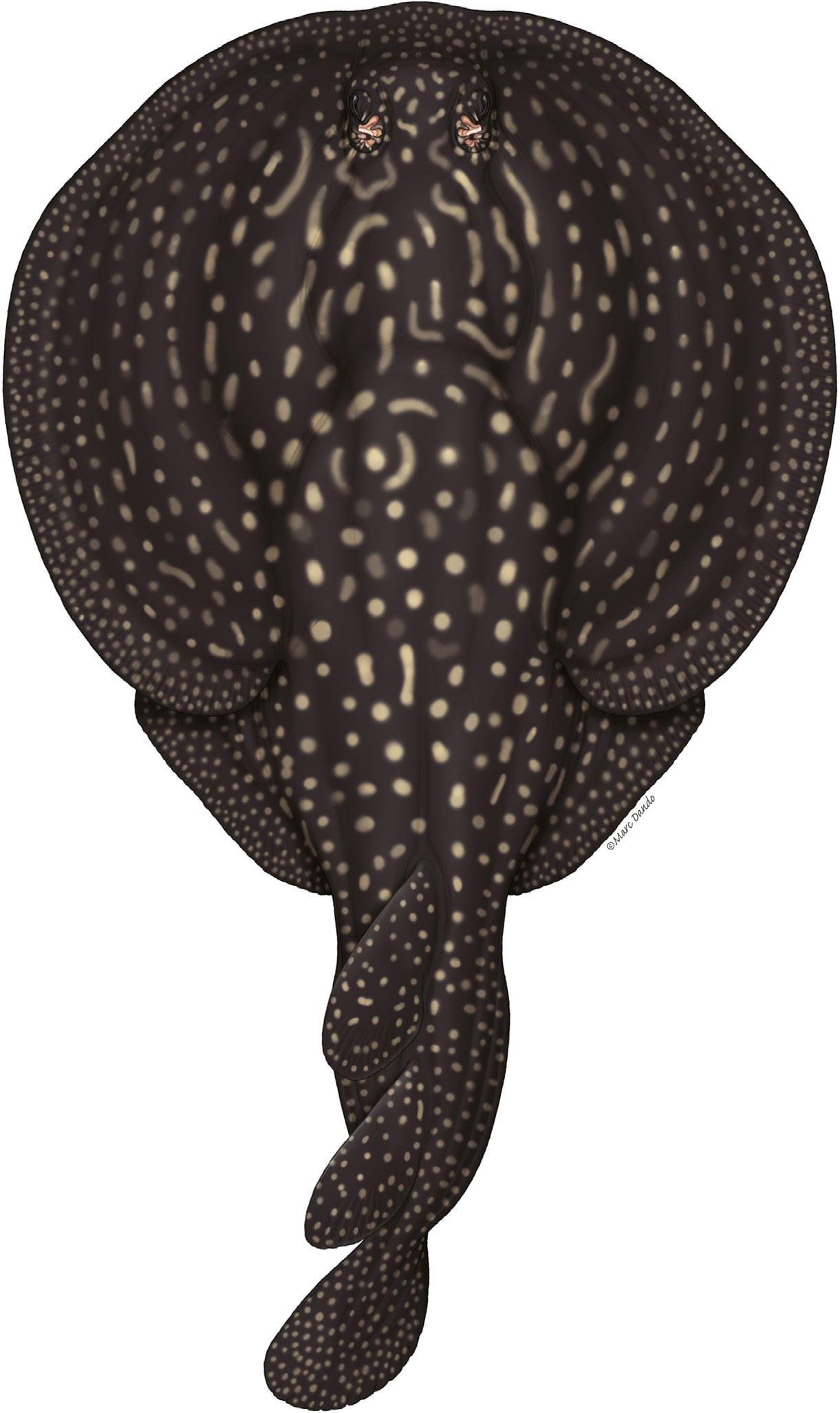
Ornate Sleeper-Ray (Electrolux addisoni)
actually suggested a book on sharks instead,” Marc said.
He soon met Sarah Fowler, founding member of the IUCN SSC Shark Specialist Group and founding trustee of The Shark Trust, and Jeremy Stafford-Deitsch, underwater photographer and author, at a conference that inspired him to seriously consider the shark-specific book idea. “These steps I’ve never really planned ahead, it just evolved.”
Today, Marc and his wife, Julie, tag-team their freelance operation called Wild Nature Press, publishing natural history books under Princeton University Press. Over the last 25–30 years, Marc’s graphic design and illustrations, paired with Julie’s layout expertise, have helped make a difference for marine animal awareness and conservation, including sharks and rays.
“One of my greatest pleasures is when somebody tells me that they have read and enjoyed our books,” Marc said.
To ensure his artwork is scientifically accurate, Marc’s creative process includes collaborating with experts in their field. When illustrating sharks, he uses a combination of numerous reference photos of the species – from different angles and varying lighting – and studying preserved specimens, as fresh subjects always aren’t practical or easy to come by, in addition to reading published descriptions.
“Illustrations can show the finite details; you’re drawing the reader’s eye to certain features which might not be possible in photos,” he continued. “I think illustrations and photography can harmonize quite well as photos can show colour, and illustrations can more clearly show shape and specific features to ID species.”
When starting an illustration, “Firstly, a pencil version is drawn and checked by specialists; it is then scanned so that I can use this as a basis to paint digitally,” Marc said. “I don’t use any generic Photoshop patterned paintbrushes; I just use a standard brush setting on my Wacom tablet, much as I would do if I painted by hand.”
Marc’s scientifically-sound artwork is in demand from organizations like The Shark Trust, Wildlife Conservation Society, Save Our Seas Foundation, World Wildlife Fund and various governmental agencies and groups. His work has also been used to illustrate materials for implementing the Convention on Migratory Species (CMS) and the Convention on International Trade in Endangered Species of Wild Fauna and Flora (CITES) – including supporting the IUCN SSC Shark Specialist Group’s communications, like the chimaera illustrations in Sharks News Issue 03.
“Science-based illustration is a wonderful way to make people look closer at things and give researchers and organizations the ability to get across their information in ways that most people don’t realize they’re taking it in,” he said. “Humans are visual animals, so it’s great to share information pictorially to protect sharks or any other animal.”
Humphead Wrasse (Cheilinus undulatus)
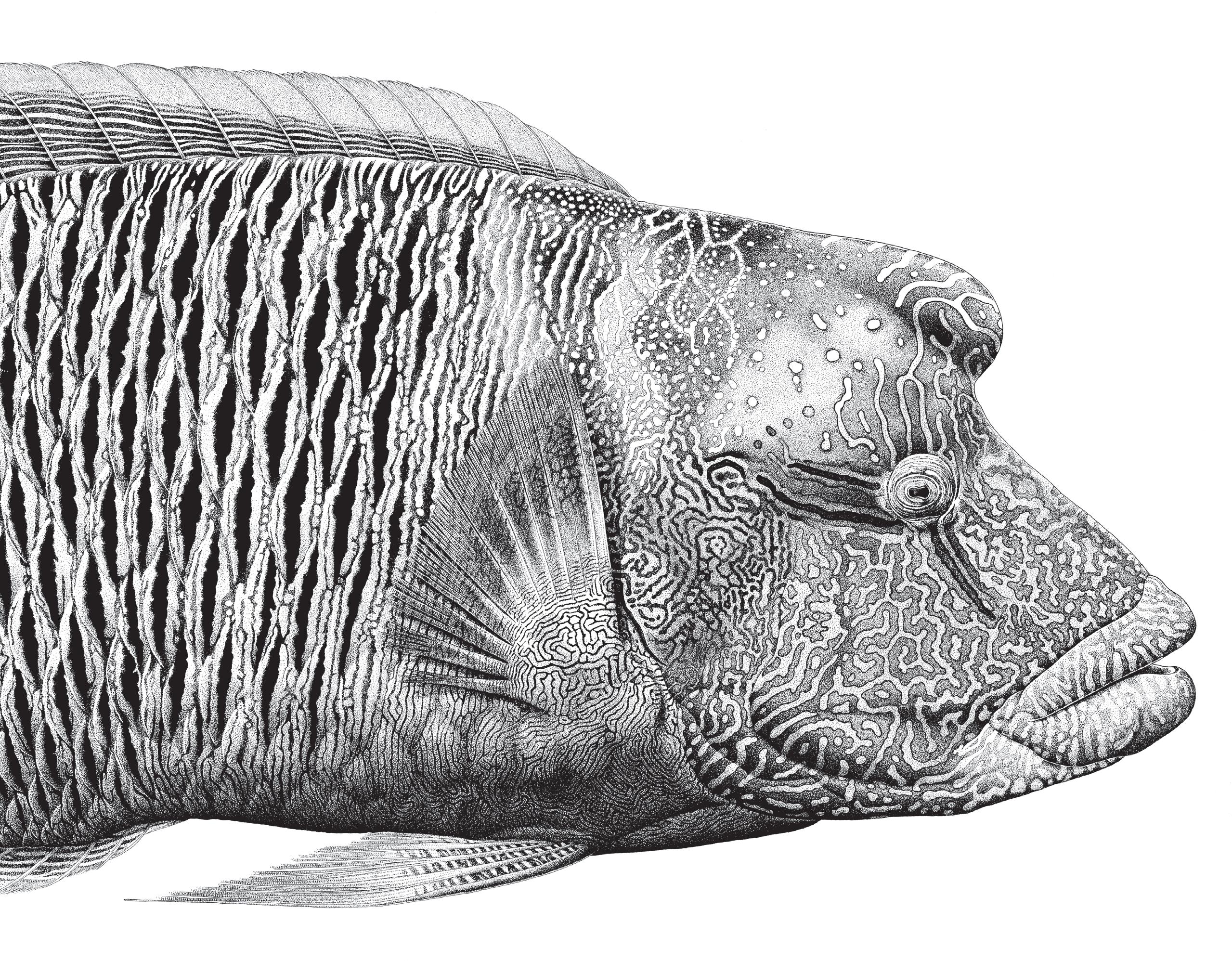
European Spiny Lobster (Palinurus elephas)
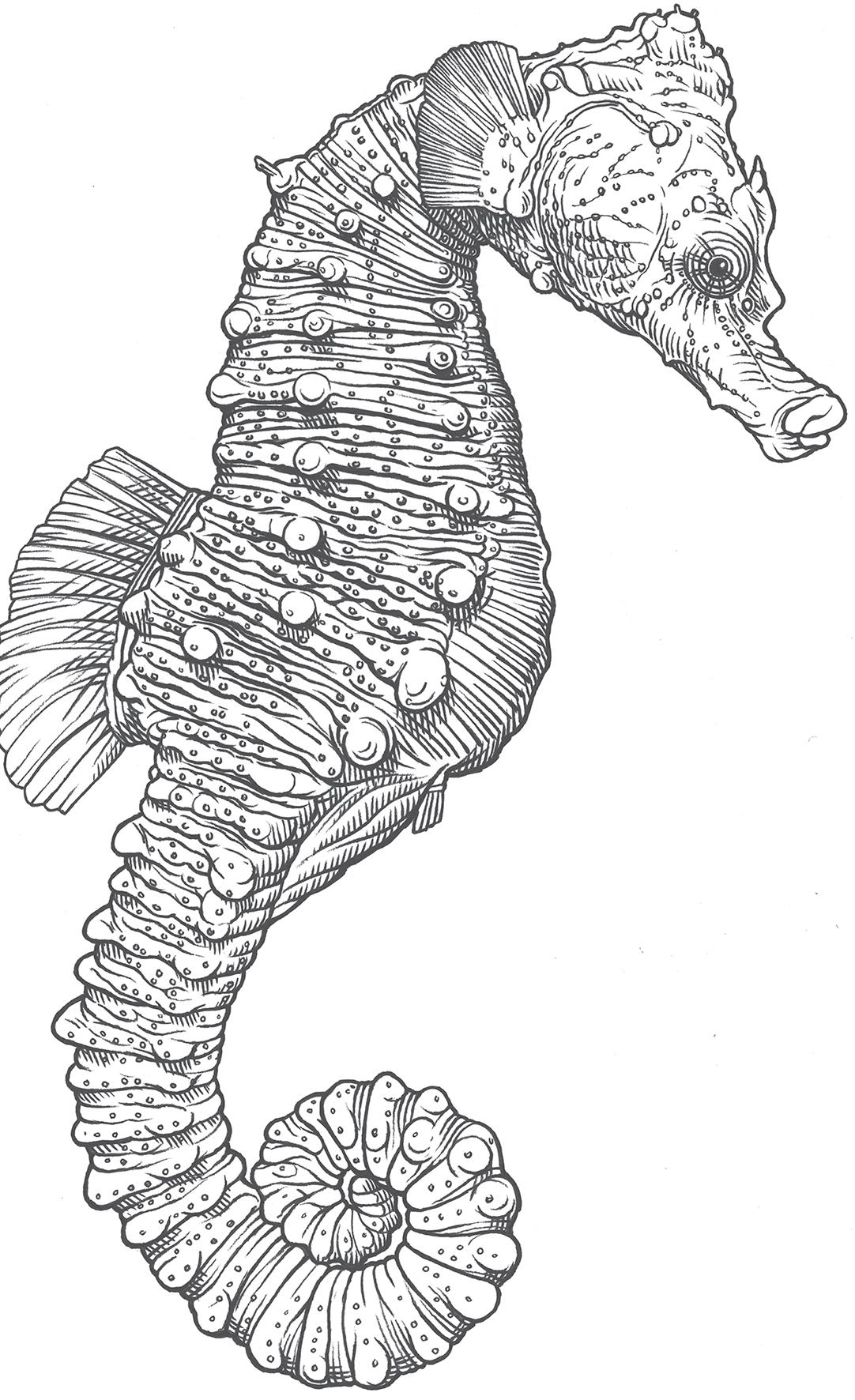
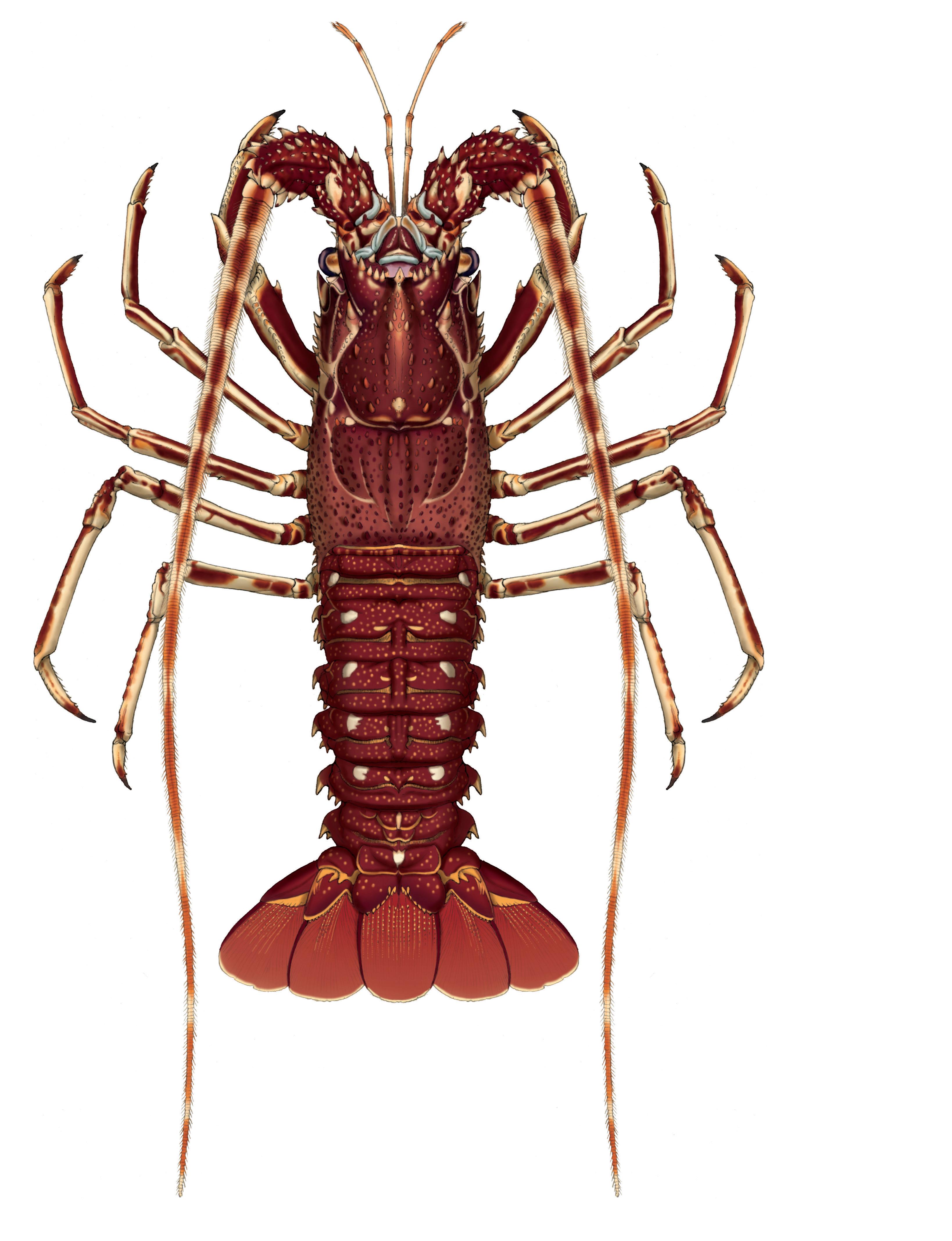
Short-snouted Seahorse (Hippocampus hippocampus)
Sharpsnout Stingray (Fontitrygon geijskesi)
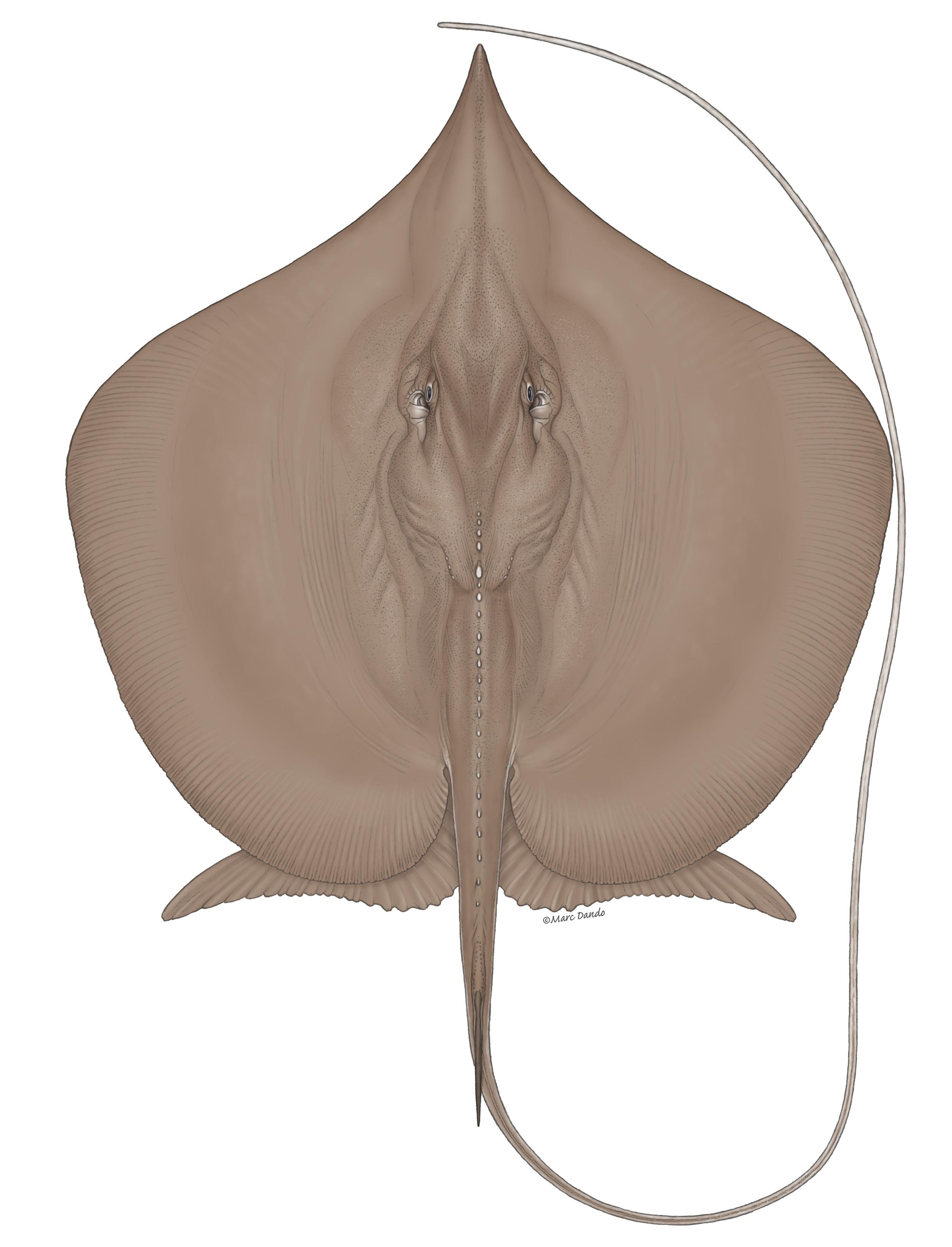
(Balaenoptera musculus) Blue Whale

(Halaelurus natalensis) Tiger Catshark (Haploblepharus edwardsii) Puffadder Shyshark
